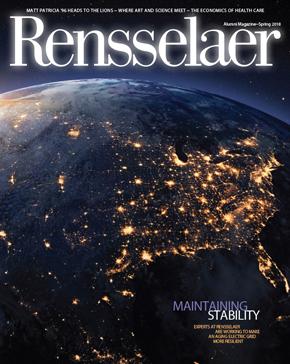
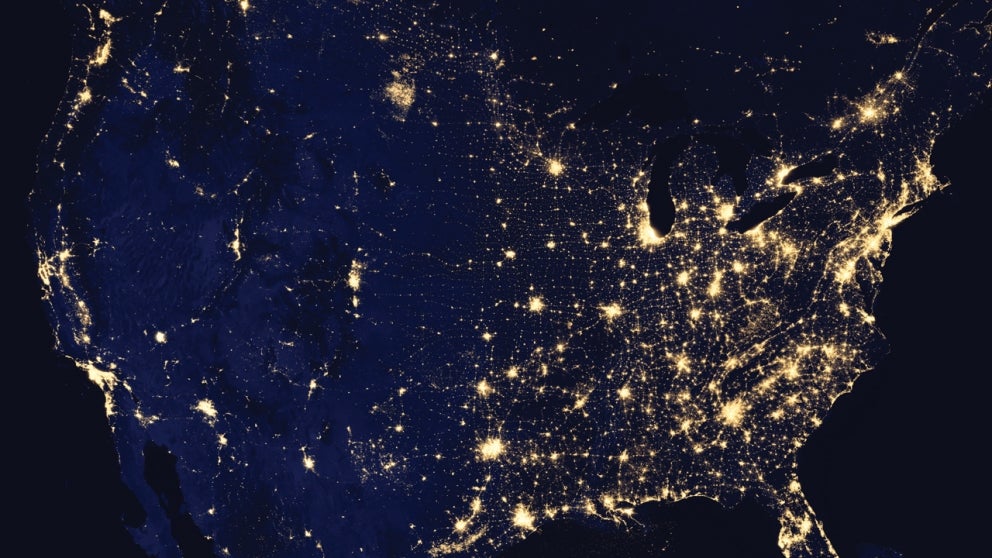
Laying the Foundation for a Resilient Power Grid
Power systems experts at Rensselaer are working to make an aging electric grid more resilient.
By Jodi Ackerman Frank
LAST SEPTEMBER, Hurricane Maria slammed into Puerto Rico with unrelenting wind and rain that decimated the island of 3.4 million people. The storm wreaked havoc on the entire power grid and left residents and businesses stranded in darkness, cutting them off from the rest of the world.

“The total effect on the economy as a result of this hurricane will still not be known for many months,” says Carlos Vazquez ’80, chief financial officer of Banco Popular, a leading banking institution that serves Puerto Rico and the U.S. mainland.
Vazquez and his wife were in New York when the hurricane hit, although their adult son was on the island staying at the family’s home. Their home was salvageable, but the event left an indelible mark on Vazquez’s conscience.
“We all underestimate the interconnectedness among all the different systems — the electric power system, the communications system, the food, water, and fuel distribution systems — all of these things are much more tightly connected than people think,” Vazquez says. “Invariably, when the power goes out, society stops working.”
The mainland had its own share of crippling power outages in 2017 from extreme weather phenomena — what scientists see as the growing threats of climate change. Hurricane Irma wreaked havoc in Florida, knocking out power for millions of Floridians and others in nearby states.
Unprecedented rain and flooding in Texas from Hurricane Harvey brought parts of that state to a halt. Climate conditions have also been blamed for the deadly California wildfires, which destroyed the cell-phone towers on which the state’s emergency service system depends.
In light of such catastrophic occurrences that have sent dire warnings of what might be yet to come, as well as the need to address pollution and an aging electric grid, there has been an intense focus in recent years, particularly in New York and California, on revitalizing our national power system to ensure sustainability and resiliency.
At Rensselaer, researchers in the School of Engineering are leading this charge in collaboration with a multitude of departments, facilities, and centers across the campus and beyond.
“Energy and sustainability are among the most critical challenges facing humanity,” Dean of Engineering Shekhar Garde says. “Rensselaer researchers are bringing together multidisciplinary perspectives from fundamental electrical engineering, modeling, simulations, and data analytics to networking and communications to help transform a tired and outdated electric grid into a modern, fully integrated smart grid.”
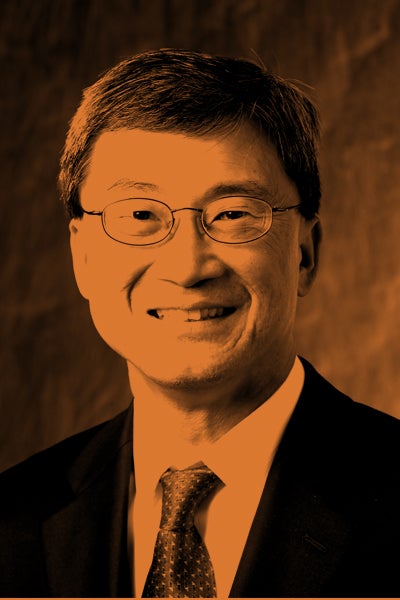
“THE NEED HAS NEVER BEEN MORE URGENT TO TRANSFORM TODAY’S GRID INTO A SMART GRID THAT PROMISES HIGHER EFFICIENCY, GREATER RELIABILITY, AND SMOOTH TRANSITION OF RENEWABLE ENERGY SOURCES.”
~ JOE CHOW
BUILDING A “TWO-WAY STREET”
The national electric grid system that powers the lower 48 states is a complex network divided into three major interconnections, parts of which are connected to the Canadian grid. The Eastern Interconnection serves the region east of the Rocky Mountains and a portion of the Texas panhandle. The Western Interconnection serves states west of the Rockies. Texas largely has its own system, the Electric Reliability Council of Texas. The three interconnections operate independently of one another.
Long-distance transmission lines connected to thousands of power plants carry high-voltage electricity to substations, where transformers lower the voltage for consumption. Renewable energy systems, such as solar panels and wind turbines, are linked to the grid through a network of sensors, smart meters, and other advanced hardware and software equipment.
Despite improvements over the last several years, our 100-year-old grid must be revitalized into a much more resilient system as it takes on the challenges of increasing energy demands and the push to integrate more renewables.
“We know the importance of addressing energy needs without heavy reliance on fossil fuels, with solar and wind power continuing to advance globally,” says Joe Chow, Institute Professor of Engineering, who has specialized in electric power control systems over the last 30 years. “Yet, the core issue of how to increase transmission capacity in a complex network with tens of thousands of transmission lines hasn’t been adequately addressed.”
The electric grid was built as a one-way system to provide electricity to our homes and businesses. But increasing use of solar panels allows consumers to sell excess power to the utilities. This extra electricity is carried back to the substation in the opposite direction, placing big strains on the grid that can halt renewable energy production altogether.
This is what has happened in Hawaii. A few years ago, with the rapid installations of solar panels, residents had to wait months, sometimes years, to have panels installed because the electric grid was simply too full. Now that the state offers incentives for energy storage, residents are encouraged to install energy storage systems as part of the photovoltaic system.
In addition, solar and wind are intermittent energy sources. This creates potential volatility in the power system because electricity generation must be equal to demand at all times. Any unanticipated voltage fluctuations can lead to brownouts or blackouts. Chow is addressing these and other power system stability issues in collaboration with government, industry, and academia.
As the Rensselaer campus director of the Center for Ultra-Wide-Area Resilient Electric Energy Transmission Networks (CURENT), he is part of a team of researchers, industry leaders, and national laboratories working toward developing a nationwide or continentwide transmission grid that is fully monitored and dynamically controlled in real time. Rensselaer is a key partner of CURENT, which is led by the University of Tennessee and supported by the National Science Foundation (NSF) and the U.S. Department of Energy.
“The need has never been more urgent to transform today’s grid into a smart grid that promises higher efficiency, greater reliability, and smooth transition of renewable energy sources into a resilient power transmission system,” Chow says.
In one project, Chow is using phasor measurement unit (PMU) data to determine grid performance in partnership with the New York Power Authority (NYPA), the New York Independent System Operator (which monitors the reliability of the state’s power system), and Sandia National Laboratories, with funding from the New York State Energy Research and Development Authority.
PMUs are sensors with special computational capabilities that are located in substations. Advancing and implementing this technology is essential to the foundation of any modern grid. They measure voltage and currents at different locations along the electric grid, using a common time source, such as GPS, to synchronize all the data in real time. This provides a comprehensive picture of an entire interconnection from, say, New York to Florida.
“We are using real-time PMU data supplied by NYPA to design software that will enhance control-system performance when disturbances come along,” says Chow, who developed computer tools for large power systems during his decade-long career at General Electric. “We want to monitor equipment performance continuously so that we can repair a piece of equipment before it completely breaks down.”
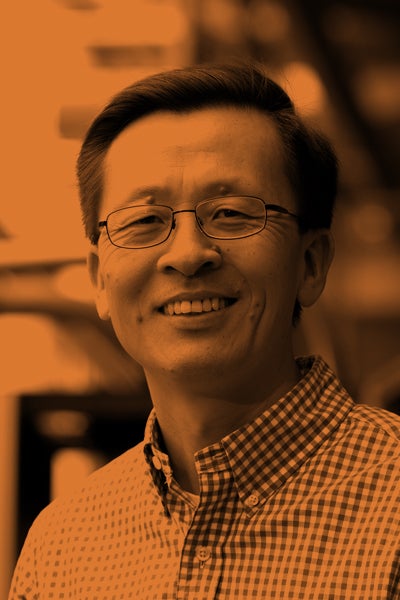
“YOU HAVE TO ESTABLISH STABILITY AT EACH POINT OF THE NETWORK AT ALL TIMES.”
~ JIAN SUN
IT'S ALL ABOUT STABILITY
“It’s really all about maintaining stability. In the power grid, there are the wires and transformers that transfer power, but having this hardware is not enough. You have to establish stability at each point of the network at all times,” says Jian Sun, director of the Center for Future Energy Systems. CFES is the hub of energy research at Rensselaer with primary foci on renewable energy, energy storage, energy efficiency, and advanced grid control.
Sun is an international authority on power conversion and grid integration of renewable energy sources. About a decade ago, he began developing his Impedance-Based Stability Theory, a method that has laid a foundation for addressing system integration issues related to renewable energy and high-voltage direct current (HVDC) transmission, which include the challenges of harmonic resonance.
Resonance has always been a concern in power systems. However, the high-speed control of power electronics used in wind turbines, PV inverters, and HVDC converters creates a new class of resonance problems that is close to or above the normal electric grid frequency. This type of resonance can lead to extremely high voltage and current harmonics, causing wind turbines, PV inverters, and HVDC converters to disconnect or become damaged beyond repair.
This is exactly what happened in the German North Sea.
In spring 2014, a major harmonic resonance between the wind farm and the HVDC converter station at one of Germany’s newly built offshore wind farms fried the filter capacitors of the HVDC converter, cutting off the wind farm for 10 months.
“What happened that year in Germany was a wake-up call to the industry for the new challenges such a system brings,” says Sun, noting that the high-frequency nature of this resonance requires new modeling, analysis, and mitigation methods.
Working with the transmission system operator TenneT and manufacturers, Sun applied his method to analyze the 400 MW system (which generates the equivalent of about $2.1 million in U.S. dollars’ worth of electricity every day when operating at full capacity), identified the root cause of the resonance problem, and recommended changes to the software that damped the resonance.
A year later, China had a similar problem, but the wind-farm installation was about 25 times bigger. While no equipment was damaged, the resonance caused several large generators in nearby thermal power plants to shut down. Again, Sun worked with China State Grid to find a solution, which this time involved wind turbine control.
The challenge is that the makeup of wind turbines and also photovoltaics, both of which consist of semiconductors for power conversion and control, is vastly different from traditional copper-and-iron-based power generators. More important, their controls are still evolving and not standardized.
“Companies want to have a unique product, but at some point, wind turbine and photovoltaic systems will need to be standardized so that utilities know exactly what they are buying beyond a few data sheets,” Sun says. “But right now, we’re not at that point — the technology still needs to evolve.”
In the meantime, Sun’s method addresses this issue by characterizing wind turbines and PV inverters at their grid-connecting terminals using a mathematical model called “small-signal sequence impedance.”
“This model allows companies to protect their intellectual property while enabling utilities and system developers to analyze system behavior, such as stability and resonance problems,” Sun says.
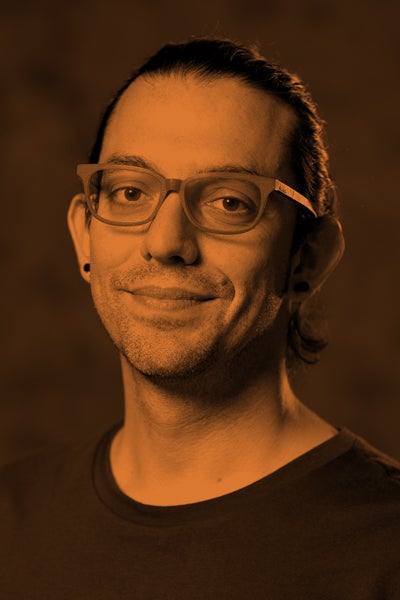
“WITH THE INFLUX OF TECHNOLOGICAL ADVANCES AND EXPERTISE, GOVERNMENT INVESTMENT, AND AN INCREASING SENSE OF URGENCY AMONG THE PUBLIC...A TRULY ROBUST SMART GRID IS WITHIN REACH.”
~ LUIGI VANFRETTI ’09
PROVIDING REAL VALUE AND MAKING A DIFFERENCE
Energy, Environment, and Smart Systems is one of the five signature thrusts of The Rensselaer Plan 2024 that addresses one of today’s most pressing global challenges — meeting the global population’s energy needs while addressing environmental sustainability.
Numerous centers, labs, and facilities across campus contribute to this research thrust, including the CFES, an Institutewide center, which was first designated by New York state in 2005 as a Center for Advanced Technology focused on energy solutions. In 2015, it was re-designated for 10 more years. With funding from the state and industry, CFES helps develop energy systems that are sustainable, resilient, and economical.
Other Rensselaer centers also lead energy research in new directions, including LESA — an NSF-funded Center for Lighting Enabled Systems & Applications; the Baruch ’60 Center for Biochemical Solar Energy Research; and the Center for Flow Physics and Control, to name a few.
A plethora of research leaders — from electrical engineering, computer science, and materials science to aerospace engineering, architecture, and biotechnology — are involved in exciting projects focused on solving specific global energy challenges.
This multidisciplinary, highly collaborative, and data-centric environment for energy research is what drew Luigi Vanfretti ’09 back to Rensselaer as a faculty member last summer from the KTH Royal Institute of Technology in Sweden. Vanfretti, who earned his doctoral degree in electric power engineering from Rensselaer and specializes in cyber-physical power system analysis, sees potential for making a real impact in this area at Rensselaer.
“My research not only requires an environment with ambition, but also talented students to put the research into practice,” says Vanfretti, associate professor of electrical, computer, and systems engineering. “Also, the state’s REV initiative provides so many potential opportunities to contribute to the evolution of our power grid in ways that were not available to me in Europe.”
REV, which stands for Reforming the Energy Vision, was initiated in the aftermath of Superstorm Sandy in 2012 that caused record destruction in New York City. The goal is to transform the way electricity is managed, distributed, and consumed through regulatory changes, incentives, and consumer choice to promote more efficient use of energy and deeper penetration of renewable energy resources.
Vanfretti previously served as special adviser for Statnett SF, the Norwegian electric power transmission system operator. During this time, he developed the Smart Grid Synchrophasor Software Development ToolKit. Archived at GitHub (https://github.com/alsetlab), the ToolKit is a collection of software for building new PMU-related software applications. GitHub is an open-source development platform for any company or researcher who wants to build software and manage projects.
Based on the idea that developers work with mobile operator system toolkits that Apple and Google (for Android) provide, Vanfretti’s repository aims to develop standard-based software for building smart-grid technologies.
At Rensselaer, Vanfretti is building the ALSETLab (Tesla spelled backward, it stands for the Analysis Laboratory for Synchrophasor and Electrical Energy Technology), which uses a real-time hardware-in-the-loop (HIL) system supported by four 32-core computers capable of running several projects at the same time. This way, HIL can test and simulate complex systems based on realistic virtual stimuli using a limited amount of real power network equipment. Vanfretti sees this as a cyber-physical system, which he believes every student in this field needs to learn about and contribute to.
“The physical engineer also has to be a cyber-physical engineer,” says Vanfretti, who emphasizes the importance of a digital curriculum for power-grid engineering to complement the basic principles of engineering with a toolbox of digital know-how.
With the influx of technological advances and expertise, government investment, and an increasing sense of urgency among the public at large, Vanfretti believes that a truly robust smart grid is within reach.
Such a smart grid, that is monitored fully and accurately in real time, will include a new generation of electric-power technologies that seamlessly integrate abundant renewable energy resources, smart metering, microgrids, energy storage, and even electric vehicles, for a much more robust and reliable power system.
“There is a lot of excitement at Rensselaer, with new ideas and technologies taking the stage to address the critical state of our electric grid,” Carlos Vazquez says. “Thinking differently about how our grid can endure is a sure path to a more reliable and cleaner electric grid.”















